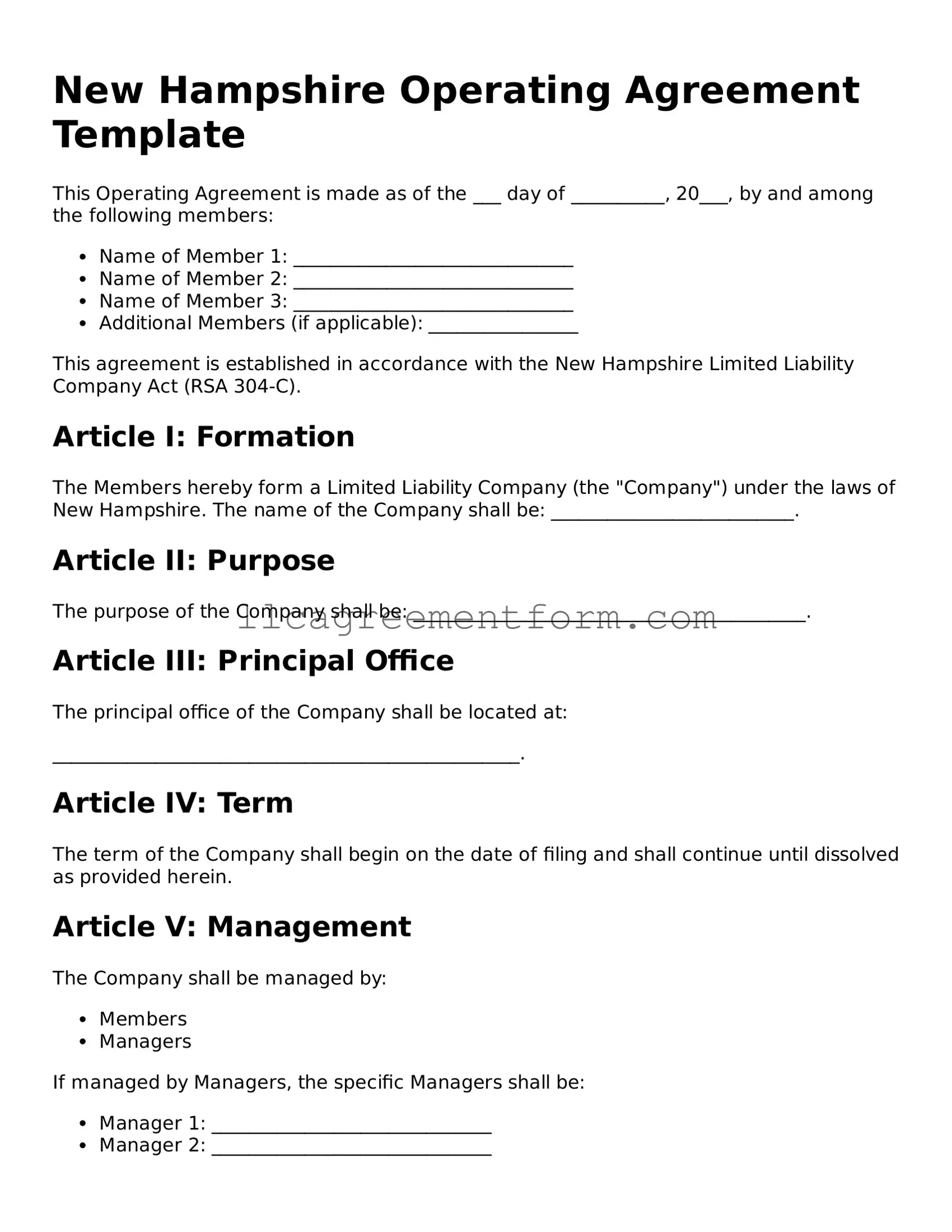Free Operating Agreement Document for New Hampshire
The New Hampshire Operating Agreement form is a legal document that outlines the management structure and operational guidelines for a limited liability company (LLC) in New Hampshire. This form is essential for defining the roles and responsibilities of members and ensuring smooth business operations. To get started, fill out the form by clicking the button below.
Get Operating Agreement Now
